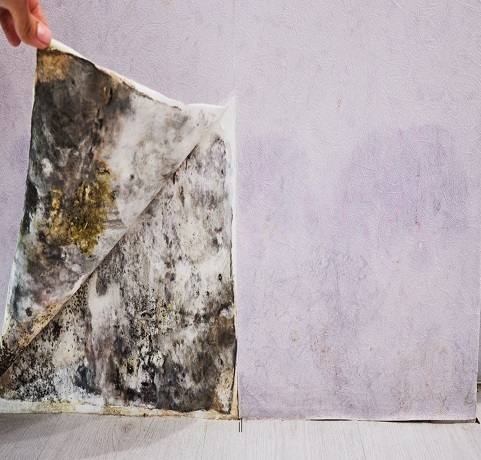Mould is notorious for its ability to spread rapidly in homes, especially following water damage. Environments marked by high humidity, inadequate ventilation, and insufficient sunlight create the perfect breeding ground for these fungi. This is a prevalent concern affecting numerous households across Australia. If left untreated, mould can lead to not only significant repair costs but also serious health risks. By recognizing the initial warning signs of mould growth, homeowners can take proactive measures to mitigate these threats before they escalate. Protecting your home means safeguarding your family’s health and well-being, ensuring a safe and comfortable living environment.
Mould is an unwelcome intruder in any home, posing serious health risks to all inhabitants, particularly those with pre-existing respiratory issues. With its ability to spread rapidly in the presence of moisture, it’s essential to understand the potential dangers of mould. By learning about the speed at which mould can develop, homeowners can better implement preventative strategies against potential water damage and its consequences, ultimately fostering a safer and healthier home environment for everyone.
This article is designed to provide you with essential insights into the rapid growth of mould following a water-related incident. We will examine the underlying factors that contribute to this issue and outline actionable steps you can take if you encounter this challenging situation. Join us on this journey as we explore the swift onset of mould growth and discover effective ways to tackle it head-on!

Essential Steps to Identify Mould Infestation in Your Home
Mould is a type of fungus that flourishes in homes when specific preventative measures are not taken. It often presents itself as a slimy, unpleasant growth, generally appearing in shades of green or black. These fungi thrive in moist environments, making areas affected by water damage or those with high humidity levels especially prone to mould infestation. Early recognition of these conditions is critical for carrying out effective remediation and preventing further complications.
Several clear indicators can suggest that mould has claimed a foothold in your living space.
- A musty odour is one of the most prevalent signs of mould presence, indicating it may be developing in hidden areas and requiring immediate action!
- Discolouration on walls or flooring is another telltale symptom. Mould often appears in irregular patterns and may be darker than surrounding surfaces, signaling the need for further investigation.
- Keep an eye out for any warping or bubbling of paint or wallpaper, as this may suggest underlying water damage and the potential for mould growth.
If you notice any of these warning signs, it is crucial to seek professional assistance without delay. Experts can perform a comprehensive assessment of the situation and provide tailored guidance on managing any existing mould. Remember, prompt action can make all the difference; the sooner you act, the easier and more cost-effective it will be to control mould growth before it becomes a more significant problem in your home.
Understanding the Types of Water Damage that Foster Mould Growth
While mould is a pressing concern for homeowners, comprehending its root causes is vital for effective prevention. By identifying the various sources of water damage that contribute to mould proliferation, you can better protect your living environment and create a healthier atmosphere for yourself and your loved ones.
Numerous factors can lead to mould growth following water damage. Even minor leaks can create the ideal conditions for mould spores to thrive and multiply. Areas that lack adequate airflow or ventilation are at an increased risk for mould proliferation, as stagnant air can trap moisture. Furthermore, damp spaces such as crawl spaces or roof cavities with elevated humidity levels are particularly vulnerable to mould infestations, making regular inspections essential.
The encouraging news is that you can take simple yet effective measures to prevent serious mould problems. Regularly inspecting your home for signs of moisture or water damage, alongside maintaining low humidity levels, can significantly diminish the risk of mould growth. Don’t wait for the situation to worsen—take proactive steps now to ensure your family’s health and achieve peace of mind within your home.
Investigating the Conditions that Encourage Rapid Mould Growth
Having established that water damage and specific environmental conditions contribute to mould growth, it’s vital to explore how quickly this process can unfold.
Under optimal conditions, mould can proliferate at an astonishing rate. In fact, mould spores can colonize damp surfaces within just 24 to 48 hours! This rapid growth can lead to severe implications for both your health and property, making swift action essential.
So, what specific conditions contribute to this rapid mould proliferation? Mould requires certain elements to thrive, including:
- Moisture: Mould flourishes in damp environments; therefore, high humidity levels or wet surfaces create the perfect setting for its growth.
- Temperature: Most mould species thrive in warm temperatures, typically between 16 °C and 27 °C, although some can even grow at lower temperatures.
- Nutrients: Mould relies on organic materials to survive—such can include wood, paper, drywall, and textiles commonly found in homes.
- Darkness: Mould can thrive in dark areas and does not need sunlight for growth, making poorly lit spaces particularly susceptible.
- Airflow: Insufficient ventilation can lead to increased moisture levels, resulting in an environment that encourages mould growth.
- Time: Given the right conditions, mould can grow and spread rapidly, underscoring the importance of vigilance.
To effectively prevent mould growth, it is crucial to manage moisture levels within your home, ensure proper ventilation, and enlist the expertise of skilled technicians to promptly address any instances of water damage or leaks.
Effective Strategies for Mould Remediation and Long-Term Prevention
Now that we understand the risks associated with mould growth, let’s examine effective strategies for addressing and preventing it. The first crucial step is to identify and remediate any water damage as thoroughly as possible. This includes repairing leaky pipes, ensuring that your gutters function properly, and investigating any other potential sources of hidden moisture.
Once you’ve addressed these immediate concerns, consider investing in a whirlybird ventilation system or an air conditioning unit to maintain low humidity levels and deter future mould growth. This proactive measure can save you from costly repairs in the long run.
Additionally, keep a vigilant eye on your home in the weeks following remediation. If you observe any early warning signs of mould re-emerging, do not hesitate to consult a professional for advice. The sooner you address potential issues, the better! Ultimately, preventing mould from developing in the first place is far more effective than dealing with its aftermath.

The Importance of Hiring Professional Mould Inspection and Testing Services
If you are uncertain about the mould situation in your home, seeking professional assistance can provide invaluable peace of mind. Experts equipped with specialized knowledge and tools can quickly identify hidden mould growth, enabling you to address potential problems before they escalate into significant issues that could jeopardize your health.
If mould has already established itself, there’s no need to panic—professional remediation services are available to help eliminate existing mould colonies. These qualified experts utilize industrial-strength cleaners and advanced techniques to ensure your home is safe once more, alleviating concerns about long-term damage and health risks. Many companies even offer free estimates for their services, allowing you to avoid unexpected costs while feeling confident in your decisions.
If you suspect mould lurking in your home, do not hesitate to seek professional help. Taking prompt action could save you money and create a healthier, stress-free environment for you and your family!
Expert Mould Remediation Services Provided by The Mould Removers
If you are facing a mould issue, it’s crucial to avoid relying on DIY methods. Instead, reach out to the skilled mould removal professionals at The Mould Removers. Their expertise in mould remediation ensures not only effective removal but also your safety throughout the entire process.
With their extensive knowledge and experience in mould removal services, you can feel confident that harmful mould colonies will not return anytime soon. Don’t hesitate—call now to address your mould concerns and reclaim the comfort and safety of your home!
The Article: Mould Growth Speed After Water Damage: What to Know first appeared on https://writebuff.com.
The Article Mould Growth Speed: Key Insights After Water Damage Was Found On https://limitsofstrategy.com


I can totally relate to your points about mould—just last year, I dealt with a bit of a situation in my own home after a heavy rainstorm. It was eye-opening to realize how quickly mould can spread, even in small spaces. I think many people underestimate the importance of regular home maintenance and being aware of moisture levels. Humidity is a real game-changer, and it’s interesting how something that seems so minor can escalate into such a big health risk.
You’ve touched on a critical issue that often gets overlooked until it’s too late. Having dealt with mould in my own home after a plumbing leak, I can attest to how easily it spreads and the stress it brings. It’s not just a cosmetic issue; the health implications for children and those with asthma are especially concerning.
It’s striking how quickly mould can take hold after even a small leak, isn’t it? Your experience highlights just how important it is to act fast and keep a close eye on moisture-prone areas in our homes. The health risks you mentioned really hit home, especially for families with children or anyone dealing with asthma.
You’ve touched on such an important issue here! Mould really does seem like the sneaky villain that can spiral out of control if we’re not careful. I remember when I first moved into my place; I noticed some damp spots in the bathroom after a particularly rainy season, and I quickly learned just how crucial ventilation is. It’s wild how small things, like opening a window or using an exhaust fan, can make such a difference in preventing those perfect conditions for mould to thrive.
You’ve captured the essence of dealing with mould so well. It’s interesting how something as simple as damp spots can turn into a bigger issue if left unattended. Your experience with the importance of ventilation really highlights how small actions, like opening a window or running an exhaust fan, can make a huge difference.
I really appreciate you sharing your thoughts. It’s true how quickly those damp spots can escalate into a more serious problem. I experienced this firsthand in my last apartment—just a small leak in the bathroom turned into not only mould but a real headache with the landlord.